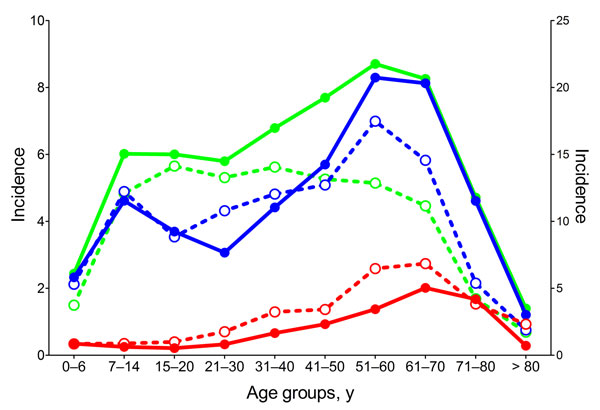Volume 19, Number 1—January 2013
Research
Vaccination and Tick-borne Encephalitis, Central Europe
Figure 3

Figure 3. . . Age distribution of tick-borne encephalitis (TBE) patients during 1990–1999 (dotted lines; open symbols) and 2000–2010 (solid lines; closed symbols) in Austria (red), Czech Republic (green), and Slovenia (blue). The incidence scale for Slovenia (right y-axis) differs from that of Austria and the Czech Republic (left y-axis).
Page created: December 20, 2012
Page updated: December 20, 2012
Page reviewed: December 20, 2012
The conclusions, findings, and opinions expressed by authors contributing to this journal do not necessarily reflect the official position of the U.S. Department of Health and Human Services, the Public Health Service, the Centers for Disease Control and Prevention, or the authors' affiliated institutions. Use of trade names is for identification only and does not imply endorsement by any of the groups named above.